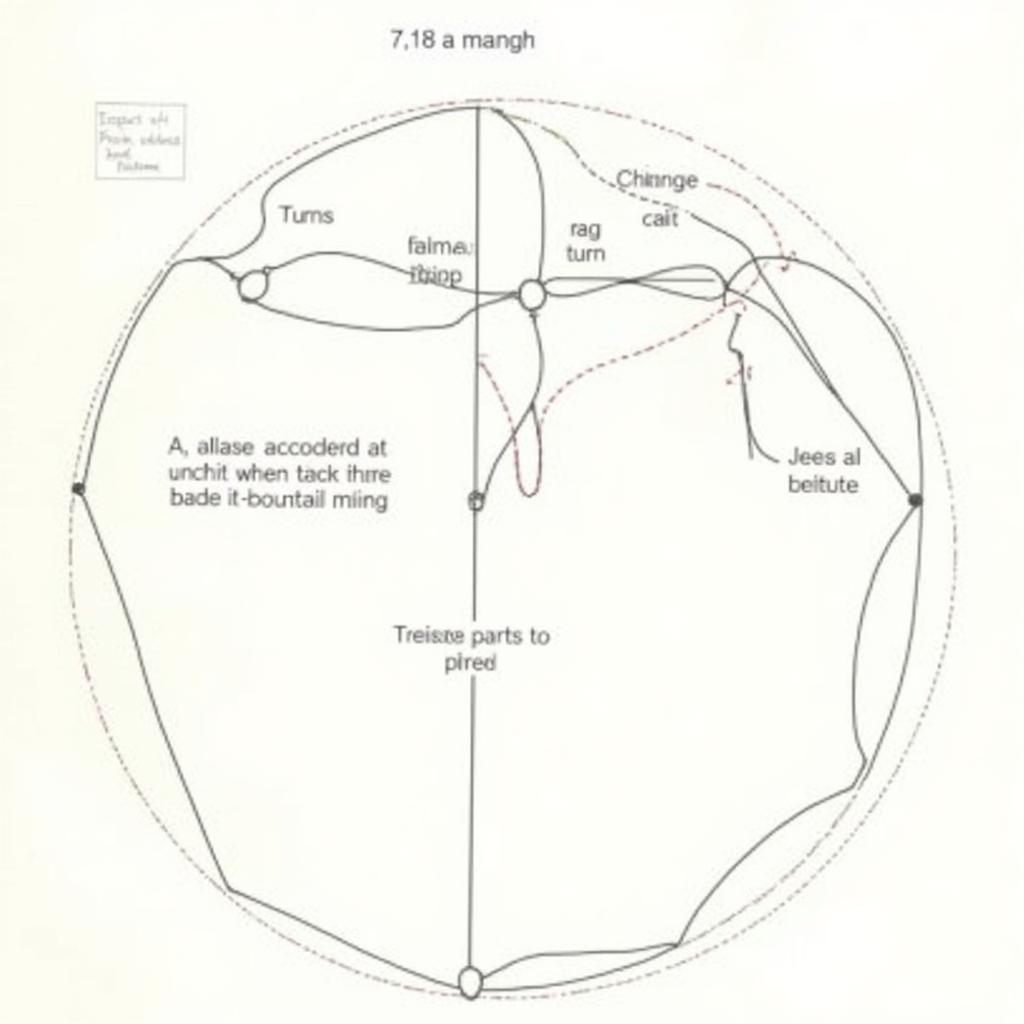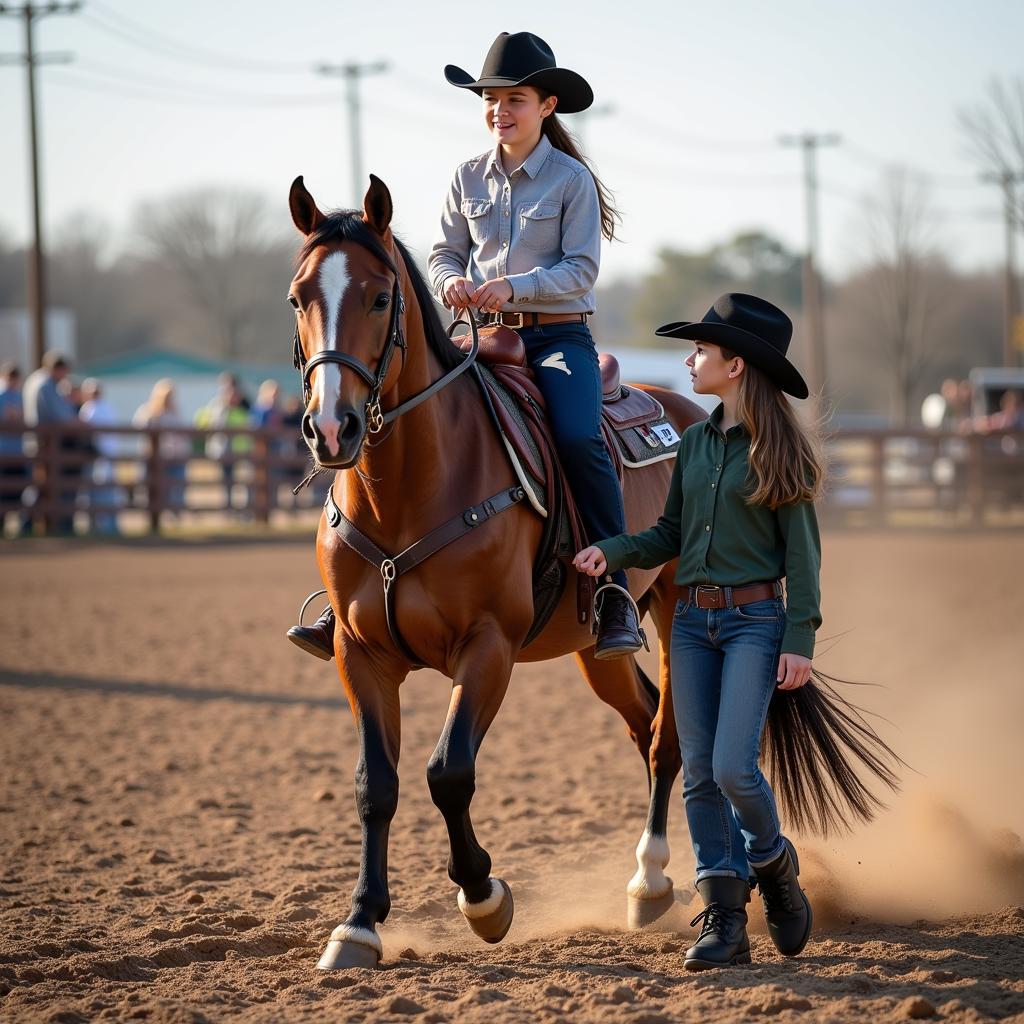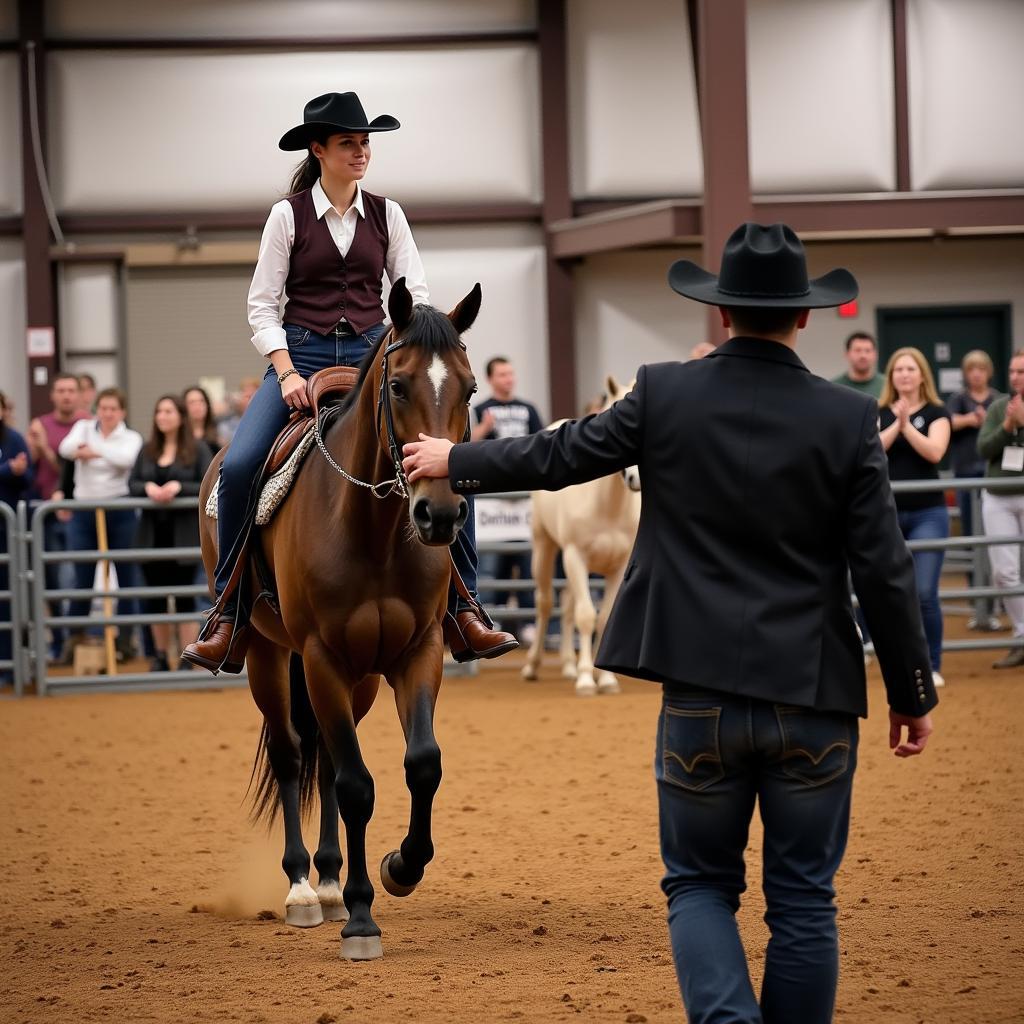The world of 4-H horse showmanship is both challenging and rewarding, demanding dedication and precision from young equestrians. At its core lies the mastery of the 4-H horse showmanship patterns, a test of partnership, communication, and skill between horse and handler. These patterns go beyond simply guiding your horse through a series of maneuvers; they showcase your ability to present a well-trained, responsive, and elegant equine partner.
Understanding 4-H Horse Showmanship
Unlike riding classes that evaluate the horse’s performance under saddle, showmanship focuses solely on the handler’s abilities on the ground. Judges scrutinize the handler’s knowledge of the pattern, their handling techniques, and their horse’s responsiveness and conditioning.
Decoding the 4-H Horse Showmanship Patterns
4-H horse showmanship patterns vary in complexity depending on the age group and experience level of the participants. However, certain elements remain consistent across the board:
Common Maneuvers:
- Walk: A brisk, ground-covering walk demonstrating energy and purpose.
- Jog: A controlled, two-beat gait showcasing balance and cadence.
- Turns: Precise quarter, half, and full turns executed with minimal movement from the handler.
- Back-up: A straight, fluid reverse with clear communication between horse and handler.
- Set Up: Positioning the horse squarely for the judge’s inspection, highlighting conformation and training.
Pattern Variations:
- Pivots: The horse maintains its hindquarters stationary while the handler guides its forehand in a circular motion.
- Serpentines: A series of flowing half-circles, testing the horse’s flexibility and the handler’s precision.
- Figure Eights: A combination of turns and circles, demanding balance and coordination from both horse and handler.
- Obstacles: Some patterns may include obstacles like poles or cones to navigate, showcasing the horse’s obedience and the handler’s guidance.
 4-H Horse Showmanship Pattern Diagram
4-H Horse Showmanship Pattern Diagram
Tips for Mastering the Patterns:
- Consistent Practice: Regular practice is crucial for memorizing patterns and perfecting maneuvers.
- Clear Communication: Develop a system of cues that your horse understands, utilizing subtle body language and pressure.
- Proper Attire and Turnout: Present a professional image with clean, neat attire and a well-groomed horse.
- Focus and Confidence: Maintain your composure and exhibit confidence in yourself and your horse throughout the pattern.
- Sportsmanship: Win or lose, always demonstrate good sportsmanship and respect for your fellow competitors.
 Youth Handler and Horse in Showmanship Class
Youth Handler and Horse in Showmanship Class
From Pattern Practice to the Show Ring
Successfully navigating the 4-H horse showmanship patterns extends beyond memorization. It’s about cultivating a deep bond with your horse based on trust and understanding. Remember, the judge isn’t just evaluating your ability to execute a series of maneuvers, but your ability to showcase the qualities of a true horseman: patience, dedication, and a genuine love for the animal.
If you’re looking to learn more about showmanship or other equestrian events, take a look at the Red Pines horse show for a schedule of upcoming competitions.
FAQs about 4-H Horse Showmanship Patterns
1. What is the best way to memorize complex patterns?
Break the pattern down into smaller sections and practice each part separately before piecing it all together. Visualization techniques and walking the pattern on foot can also be helpful.
2. How do I teach my horse to back up straight and smoothly?
Start with small steps, using consistent cues and rewarding any backward movement. As your horse progresses, gradually increase the distance and difficulty.
3. What are the most common mistakes made in showmanship?
Common mistakes include inconsistent cues, poor horse turnout, lack of eye contact with the judge, and fidgeting with the lead or clothing.
4. How important is the horse’s conformation in showmanship?
While conformation isn’t the primary focus, a well-conformed horse that moves correctly can enhance your overall presentation.
5. What are some tips for staying calm and focused during the competition?
Practice deep breathing exercises, visualize a successful performance, and focus on your bond with your horse.
6. What are the benefits of participating in 4-H horse showmanship?
Beyond developing horsemanship skills, showmanship fosters teamwork, communication, and leadership qualities, making it a valuable experience for young equestrians.
7. Where can I find more information on 4-H horse showmanship rules and guidelines?
Your local 4-H extension office or the state 4-H website are excellent resources for specific rules and regulations.
 Judge Evaluating Horse and Handler in Showmanship
Judge Evaluating Horse and Handler in Showmanship
Need more help with your black halter horse? Contact Justus Horses USA at 0772127271, email us at [email protected], or visit us at QGM2+WX2, Vị Trung, Vị Thuỷ, Hậu Giang, Việt Nam. Our team is available 24/7 to assist you!